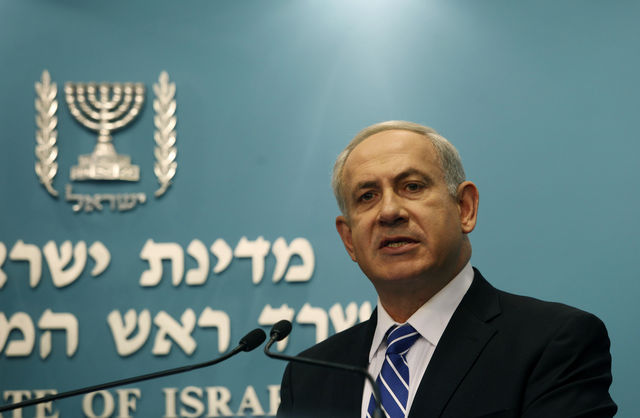BERLIN: Homegrown terrorism stands high on the security agenda almost everywhere in Europe. Its links to international extremist Islamic groups require that governments review and re-think how they respond to it.
International security cooperation, border controls, and transport sector monitoring are all important, but they don’t go far enough. Governments must also identify radical tendencies within Europe’s Muslim communities and devise strategies to counteract them. The narrow aim should be to nip terrorism in the bud, and the broader aim should be to open a dialogue with the Muslim community.
This agenda emphasizes intercultural communication as the best way to break down prejudices and negative clichés on both sides. From the point of view of security policy, intercultural communication is intended to immunize those sections of the Muslim community that are deemed to be potentially receptive to extremist propaganda, with the clear aim being to prevent their radicalization and recruitment to jihad .
For immunization of this sort to be successful, it is important to first clarify what can turn someone into a jihadi. There appears to be no single answer.
But one common pattern that does emerge is that the jihadi message, because it promises meaning and identity, seems to appeal particularly to people who are unsure about who they are and where they are heading.
Last year, a study of German Muslims analyzed social integration (including obstacles), religion, attitudes to democracy, the rule of law, and politically-inspired violence. The vast majority of respondents were from a migrant background, and a quarter were Muslims whose families had been in Germany for a generation or more. In terms of ethnic origin and religious practice, they were a representative sample of Germany’s Muslim community.
The study provided valuable insights into homegrown terrorism, for it revealed a consistently close link between radicalization and “vicarious experiences of marginalization and discrimination. A critical factor was the powerful emotions generated by United States-led military interventions in Muslim countries, and by the situation of the Palestinians. The blanket suspicion that was widely seen as falling on all Muslims after every terrorist attack was also strongly resented.
But the study revealed no automatic correlation between Islamist sympathies and condoning the use of violence. And, while individuals who had Islamist sympathies and condoned violence were more likely than others to become involved in homegrown terrorism, a mere 1.1 percent of Germany’s Muslims fell into this category. The authors also noted that the mechanisms that turn Muslims into potential terrorists are the same as those that make German teenagers susceptible to xenophobic propaganda and right-wing extremism.
The study’s conclusions applied only to Germany, but its main findings were largely corroborated by a Gallup global survey. According to Gallup, only 7 percent of Muslims are politically radical and condone the use of violence, and their motives are not so much religious as inspired by the demeaning political and social treatment that Muslims are perceived to suffer.
This is in marked contrast to the conventional view in the West that the prime motive for Islamist terrorism is religious. Many Muslims see that erroneous assumption as evidence of the West’s contempt for Islam, reinforcing their view that Muslims as a whole are victims of discrimination and creating a vicious cycle that may generate further radicalization on both sides.
Indeed, certain aspects of the host-country environment may contribute to radicalization. While external factors also play a major role, Muslim attitudes toward their host country are strongly influenced by the perception that Muslims are subjected to humiliation and oppression. This is liable to be reinforced by any negative experiences that Muslims may suffer themselves.
Finally, there is the quantitative question. The number of potential terrorist recruits can only be estimated, but it corresponds more or less to the percentage of the population in any Western society that is likely to be involved in violent crime. In no sense do these people amount to a mass movement. But, as protagonists in the complex web of interaction between the Muslim and the Western worlds, they view militant terrorism as their preferred option.
There are, of course, other forms of interaction, and this brings us back to the question of how to respond to homegrown terrorism. A distinction is often made between “hard tools for combating terrorism – i.e. executive, including military measures – and “soft tools such as programs promoting the integration of Muslim immigrants, efforts to stabilize and develop problem countries, and strategies for intercultural dialogue.
The slogan “war for Muslim hearts and minds is a grotesque yet revealing attempt to link both sets of tools. Even when such interaction is to communicate a political message, an image of war is used. If we adopt the parlance employed by Al-Qaeda while at the same time proclaiming our intention to communicate with the whole Muslim world, we run the risk of reinforcing Al-Qaeda’s message. The “competition of ideas appears to be confined to Al-Qaeda’s jihadi agenda. Such a response is hardly likely to alter the mindset of potential recruits.
Today’s tendency to view Muslim grievances in one-dimensional terms reduces political discourse to a very simplistic level. Our interactions with Muslims may be unconsciously influenced by this defensive reflex, and that may encourage equally defensive attitudes on their part.
Busso von Alvensleben is Commissioner for Global Issues: Civilian Crisis Prevention, Human Rights, Humanitarian Aid, and International Terrorism at the German Foreign Ministry. This article is published by Project Syndicate/Europe’s World (www.project-syndicate.org and www.europesworld.org).

